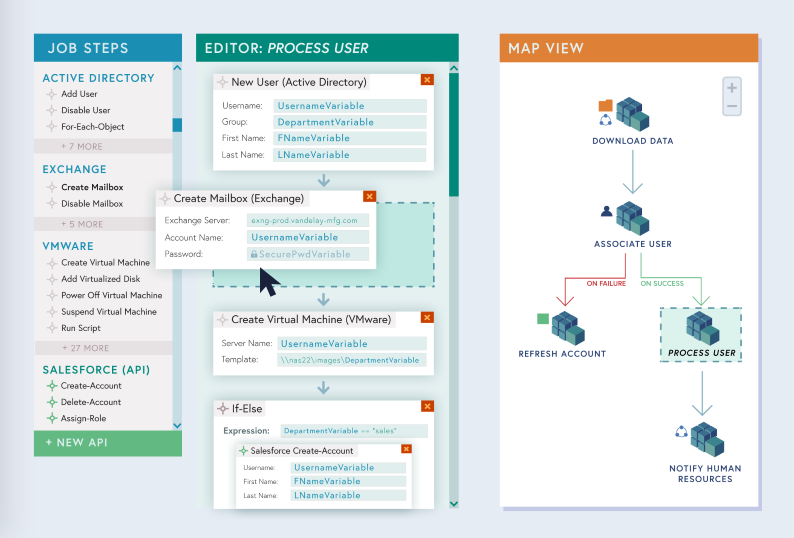Excellent Info On Picking application development with Low-code platforms
Wiki Article
Low-Code App Development Is Faster.
Visual Development Environment (VDE):
Drag-and-Drop Interfaces: Low-code platforms provide visual tools for designing applications. Developers can utilize drag-and-drop tools to quickly assemble applications without having to write a lot of code.
Pre-built Templates and Components: A number of low-code platforms include already-built templates and components that allow developers to quickly prototype and build applications without starting from starting from scratch.
Reduction of Coding Requirements
Automated Coding Generation Low code platforms generate the code automatically based on the visual model developed by the developers. This eliminates the requirement to write code manually and accelerates the process of development.
Reusable Components : Developers can reuse components across different projects to reduce the amount of time needed to write and testing code.
Collaboration can be streamlined.
Integrated Development Tools : Low code platforms typically include tools for testing as well as deployment, version control and. They help facilitate collaboration between teams.
Citizen Development Developers, business users and other users can all contribute to application creation using intuitive user interfaces. This eliminates the bottleneck created by the absence of experienced developers.
Rapid prototyping and rapid iteration:
Rapid Prototyping. Developers can design prototypes quickly in order to test their ideas as well as get feedback. This can lead to a faster iteration cycle.
Easy Modifications: The visually-oriented design of low-code programming makes it easier to make updates and changes to applications, which speeds up the process of refining and improving applications based on user feedback.
Pre-built Integrations:
API Integrations: Low-code platforms usually come with pre-built connectors for well-known APIs and services, reducing the time required to connect external systems.
Data Integration: Built in tools for data integration facilitate the connection between databases and other data sources. This speeds up development.
Scaling, deployment and deployment:
One-Click-Deployment: A lot of Low-Code platforms provide one-click option for deployment. This reduces the amount of time and effort required to deploy an application.
Cloud-Based Platforms: Cloud-based platforms which have low-code capabilities can manage infrastructure and scaling, meaning developers can concentrate on the logic and functionality of applications instead of the logistics of deployment.
Low-code development of applications is a quicker method to create apps. It simplifies and automates many aspects of the procedure. This makes it easier to speed up development and the ability to adapt to evolving requirements. Follow the top rated Low-code Platform for application development for site examples including microsoft azure sql, paas service, ms azure sql, rad application development, driver jdbc, azure sql, jdbc server, develop mobile application, app dev platform, driver jdbc and more.

The Benefits Of Low-Code Development In Terms Scalability, Flexibility And Scalability
Low-code development has several benefits in terms of flexibility and scalability, which is crucial to creating applications that are capable of growing and adapting to the changing needs of business. Here are a few of the major advantages Rapid scaling:
Cloud-Based Platforms: Many platforms that support low-code are cloud-based. They allow applications to easily scale up and down with the cloud infrastructure. Businesses can handle greater load without having to worry too much about administration of servers.
Auto-Scaling Features - Built-in automatic scaling features automatically adjust resources in accordance with the demands. This provides continuous performance, even during peak periods without manual intervention.
Flexible Architecture:
Modular design: Low-code platforms are a excellent way to promote modular software. This allows components to be developed independently as well as tested, sized and so on. This modularity enhances flexibility and allows to expand or update specific parts of an application without impacting the overall system.
Integration of microservices: The ability to support microservices architecture lets applications be built as a collection of loosely connected services. This enhances both scalability, and flexibility.
Customizable Options:
Extensibility: Low-code platforms generally allow for custom scripting and coding which lets developers expand the capabilities of apps beyond that available out-of the-box. This allows developers to satisfy their unique business requirements without any limitations.
Third-Party Integrations: The incorporation of third-party APIs, services or other types of services permits companies to expand the functionality of their applications by adding new functions.
Agile Development and deployment:
Continuous Deployment and Delivery: Low-code platforms can be used to implement agile methodologies, which allow continuous deployment and integration (CI/CD). This enables rapid deployment of updates and the introduction of new features, allowing apps to grow rapidly in response to user feedback and changes in the market.
Iterative Development: Thanks to the nature of iterative development, low-code applications can scale and improve incrementally. This helps reduce the potential risk of major changes and allows for greater control over expansion.
Resource Optimization:
Efficiency in Resource Management: Low-code systems help optimize resource usage by providing tools for monitoring and managing the performance of applications. This allows resources to be efficiently used, and also to be scaled down or up according to the need.
Load Balance: This function lets the application manage massive traffic by distributing workloads among several servers. It also ensures that the application's performance is constant.
Global Reach
Multi-Region: Low-code platform deployments are typically available across multiple regions which allows businesses to offer low latency access to every user. This is particularly important for applications with a worldwide user base.
Localization Support for Localization built in, which allows for applications to be easily modified to accommodate various languages or regional needs. This enhances flexibility for various markets.
Updates and maintenance:
Simplified maintenance: The graphic and modular nature of low code applications simplifies the maintenance tasks. They allow updates and bugs fixes to be made quickly without a long period of downtime.
Version Control Systems for Controlling Versions can assist you in managing the rollbacks, updates and changes. They will make sure that they are released without risk and the previous version is restored as required.
Cost Efficiency:
Low development costs. Through the reduction of coding requirements, low-code platforms lower the cost of development and enable applications to grow without requiring more development efforts.
Pay-as-you-go models Numerous platforms that are low-code offer flexible pricing options, including pay-as we-go models that align the cost and usage to the actual growth.
In general, low-code applications developers provide a lot of flexibility and scalability that allows companies to rapidly build adaptable and flexible applications. These platforms offer quick and efficient responses to changes in needs, resource efficiency and continual improvements, making it possible the application to expand with a business. Take a look at the top Legacy application modernization with Low-code tips for site tips including sso azure, cross platform app development, push notifications, driver jdbc, lowcode no code, software for app development, push notifications, ms azure sql, develop web application, database in azure and more.

Advantages Of Low-Code Application Development In Terms Of Limitations And Customization
Low-code development is a balanced approach that provides significant advantages in terms of solving limitations and allowing modification. Here are some of the major advantages: Handling limitations
Removing Complexity Barriers
Low-code platforms make development easier by providing pre-built templates and components. This allows rapid deployment and development of complex applications.
Many platforms feature guided workflows, which assist developers navigate through complicated procedures. They decrease the chances of making mistakes and help maintain the consistency.
Scalability Solutions
Scalability Built-In Lowcode platforms usually have features to allow for an scalable architecture. They allow applications to handle growing loads without requiring major overhauls.
Performance Monitoring: The instruments which monitor and optimize performance assist to ensure that the applications are effective, even when they grow.
Security and Compliance
Integrated Security Features: Low codes platforms have security measures built in like encryption and access control based on role. They also perform automated checks of compliance to address security concerns.
Platforms update frequently their security protocols, and ensure that they are in compliance with the regulatory requirements. This helps to keep applications safe from emerging threats.
Customization Features:
Extensibility:
Custom Code Integration: Low-code platforms often permit the integration of custom code (e.g., JavaScript, Python), enabling developers to extend the functionality beyond the basic features.
Custom Modules and Plugins: Developers have the option to create customized modules or plugins to customize specific functionality to fit unique business needs.
APIs and Integration
API Support: The extensive API support allows seamless integration of external systems and services. This enables the ability to customize and connect.
Third-Party Services : Low-code platforms often provides pre-built connections for well-known services offered by third parties making integration and customizing easy.
Flexible UI/UX design:
User-friendly interfaces that can be customized: Users are able to modify and create their own user interfaces, which will provide a more tailored experience.
Responsive Design: The built-in capabilities of responsive design make sure that apps can be adapted to different screens and devices.
Business Logic Customization
Visual Workflow Builders: These tools allow developers create complex processes with little or no programming. They can create business processes and workflows using visual.
Conditional Logic and scripting : Platforms allow conditional logic, as well as custom scripting in order to meet specific business rules.
Data Management
Custom Data Modelling: Developers create custom models that meet particular requirements of the application. They can customize the handling of data to meet business requirements.
Advanced Data Processing: The integration of advanced tools and capabilities for data processing allows for customization in the way data is processed and utilized within the application.
Balancing limitations with customisation:
Frameworks and Standards
Best Practices: Low-code platform promotes conformity to standards and best practices in the industry. This can be helpful to ensure high-quality apps that are scalable, secure and reliable.
Governance Frameworks Inbuilt governance frameworks will ensure that customizations do not interfere with the integrity, security or security of the application.
Iterative Design and Feedback
Rapid prototyping: Developers are able to quickly prototype and test customizations in response to feedback from users, improving the application in line with their preferences.
Continuous Improvement: Low code platforms enable constant improvements. They are able to be customized and enhanced as business needs change.
Empowering Users:
Low-code platforms allow citizen developers to develop by allowing non-developers with intuitive interfaces, to personalize applications, they expand the pool contributors that can modify and enhance apps.
Support and Training: Many platforms have extensive resources for training and support that can assist users with making efficient customizations without compromising the stability of the application or performance.
Low-code development is a powerful framework that offers a wide range of customisation while addressing any limitations. This allows businesses to create and maintain applications that are efficient, adapted for their specific needs and that meet high standards of quality, security, and scaling.
